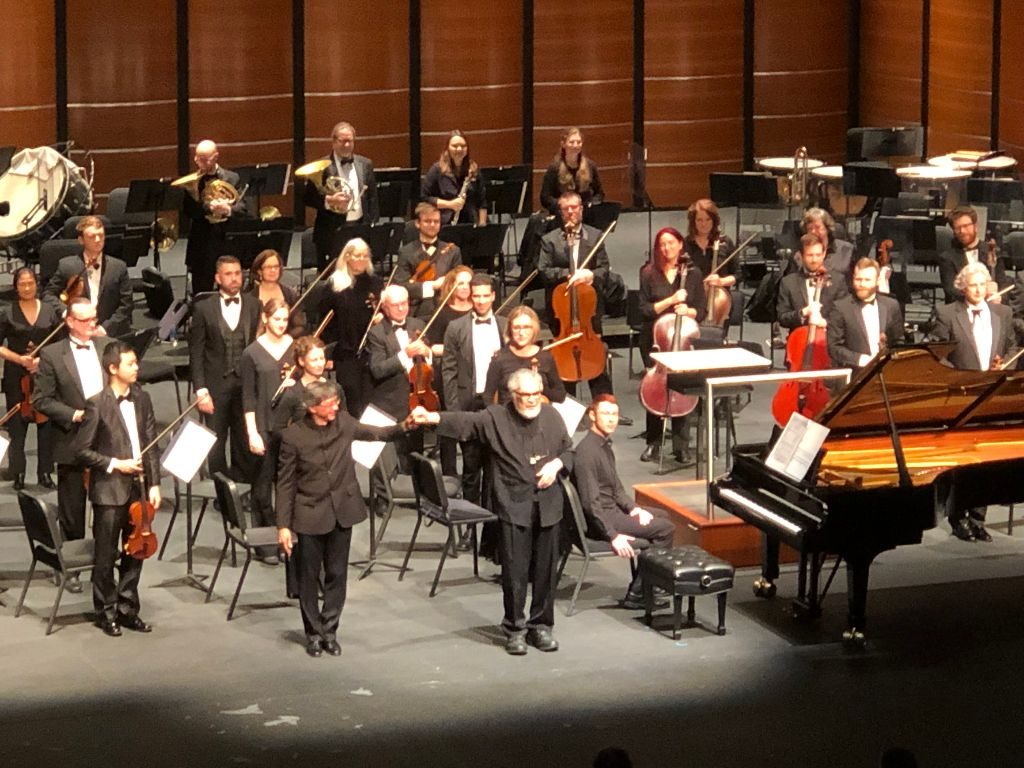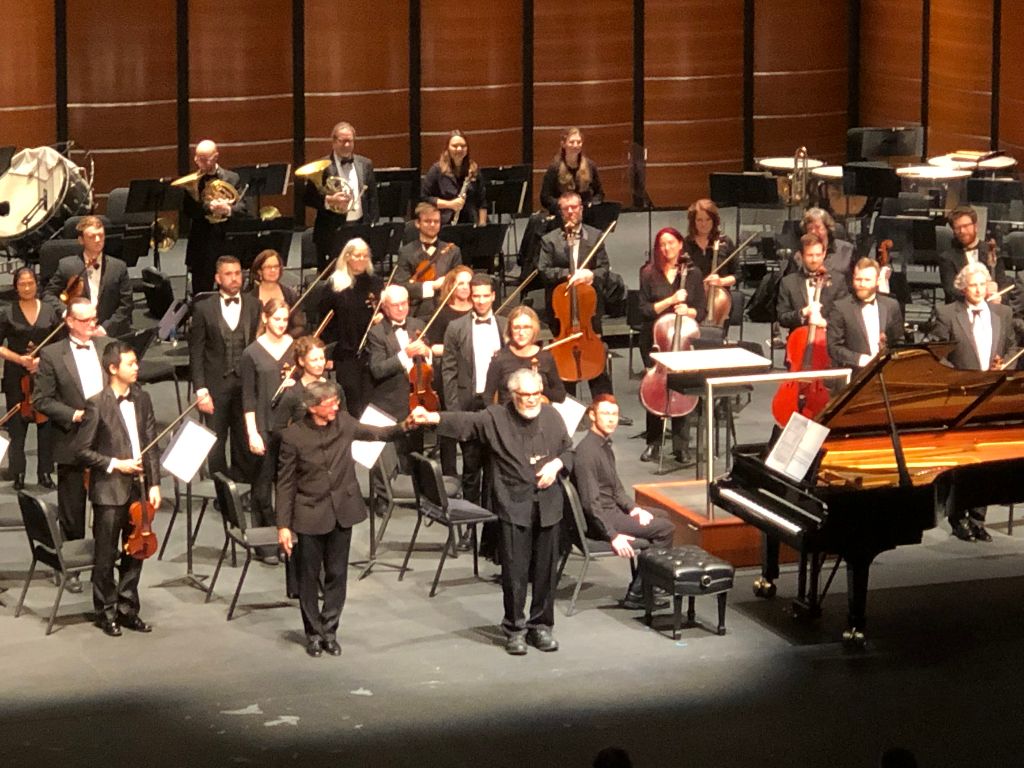
Sharing the stage with a titan of music, the Austin Symphony this weekend welcomed pianist Leon Fleisher into its midst to play Mozart’s piano concerto no. 12. Now 90 years old, Fleisher was dubbed “the pianistic find of the century” when he made his debut with the New York Philharmonic at age 16.
He joked before the concert that the reason he selected this piano concerto is because “at the moment it is the only one I remember.” He has been teaching at the Peabody Institute (John Hopkins University) for 60 years. For the past 40 years he has been acquainted with Austin Symphony maestro Peter Bay, who said he is still learning from the master. Together they delivered a piano concerto that is an exceptionally eloquent evocation of music from Mozart’s fairly early period, dated to 1781.
This is not a cerebral concerto. Mozart himself explained that this one and two others of that year represent a “mean between the too difficult and too easy…very brilliant and pleasing to the ear.” I found it to be a lightly diverting piece where the lack of extraordinary mental demands on technical virtuosity are compensated for by a joie de vivre or, to put it more modern parlance, a happy-go-lucky feeling that satisfies the senses. Lacking pyrotechnics, it bubbled like champagne chilled to just the right temperature in the masterful hands of Fleisher. In the piano solo near the conclusion of the Andante his fingers barely touched the keys, nearly fluttering to a stop at one point. Like a piece of rich chocolate that slowly melts in the mouth, this was a performance to savour.
The concert at the Long Centre was a frivolous good time. It began with Variations on “America” by Charles Ives, who took the music originally written for the British national anthem, God Save The Queen to create five variations. Ives said that playing these variations was as much fun as playing baseball. The programme notes say that Queen Victoria would not have been amused by the mock solemnity of the piece, which also serves as the music for the patriotic song My Country Tis of Thee on this side of the pond. While Victoria may not have liked it, I think Queen Elizabeth probably would, as she has a keen sense of humour. Whether she has ever heard it I can’t say, but having survived English punk rock music from the Sex Pistols this 1891 piece by Ives is downright reverential.
Variations was the theme of another composition performed by the Austin Symphony, a suite of 27 variations by Dvorak. Dating to 1877, it showcases a range of musical genres in 22 whimsical minutes. Concluding the concert was the 1946 composition by Benjamin Britten, The Young Person’s Guide to the Orchestra, which developed themes made popular by the Baroque composer Henry Purcell from the 17th century. Every instrument gets to express itself here; in particular I found the interplay of the brash horns with the delicate harpsichord to be quite delightful and unusual.
Those who missed this concert have another chance to attend tonight, Jan. 12, 2019.
For future concerts visit: austinsymphony.org
Photo by C Cunningham
